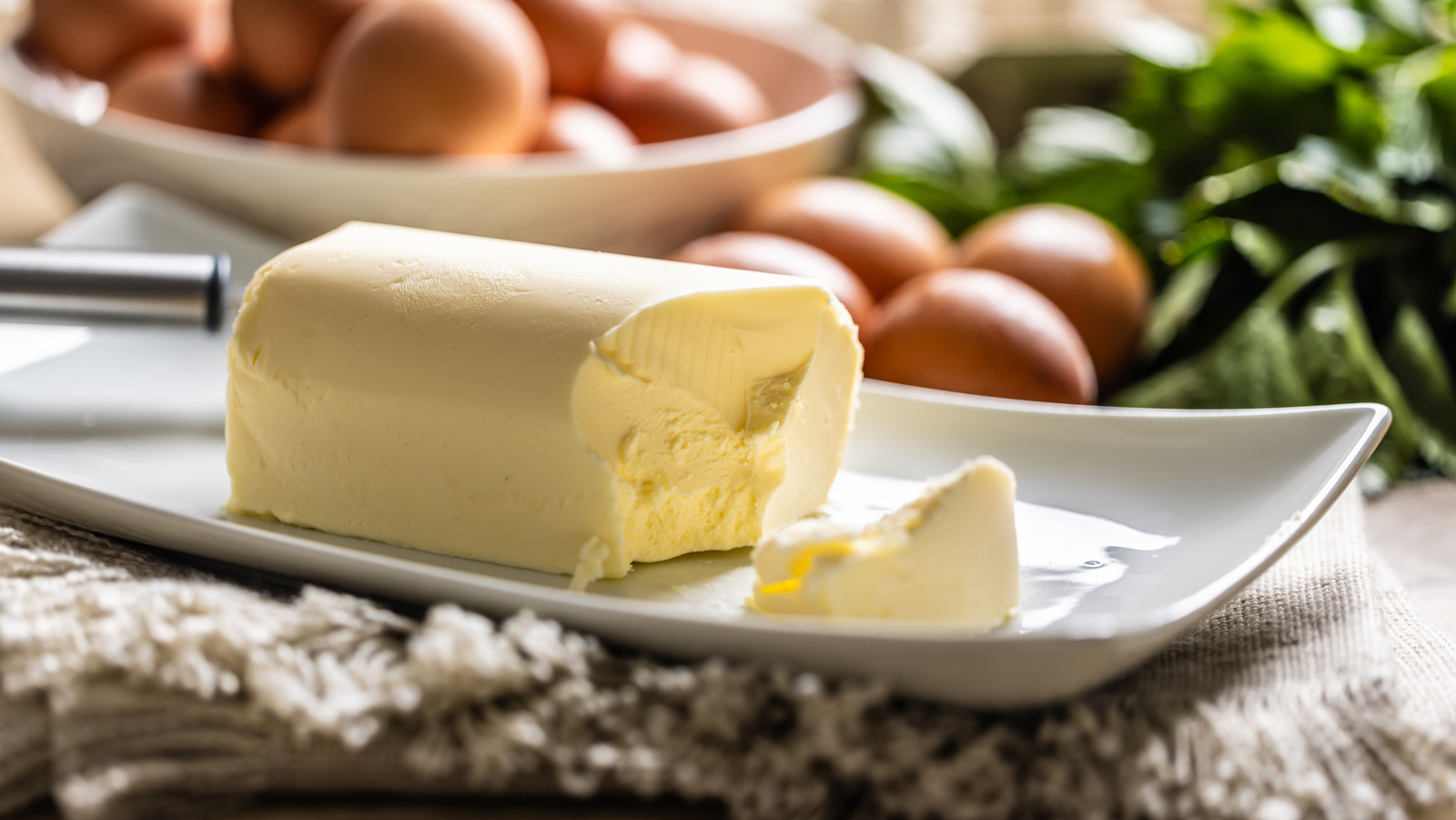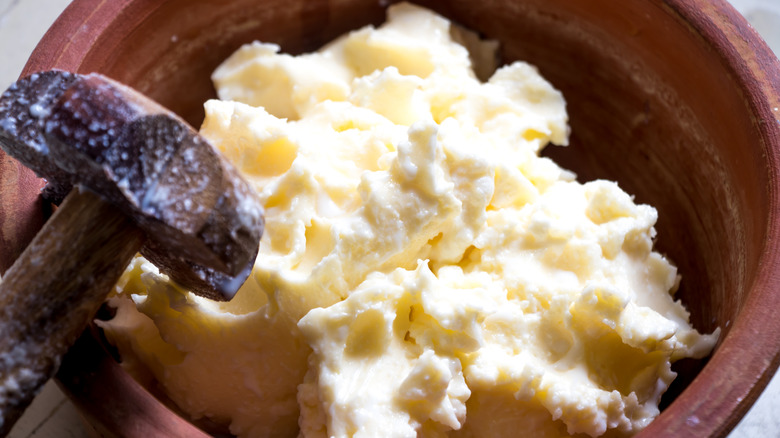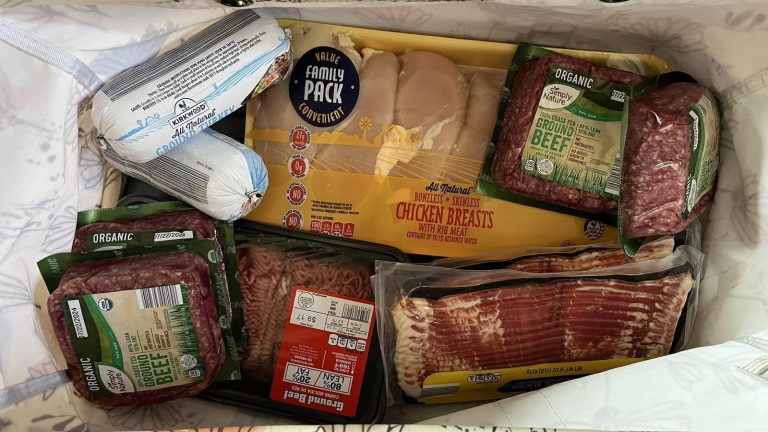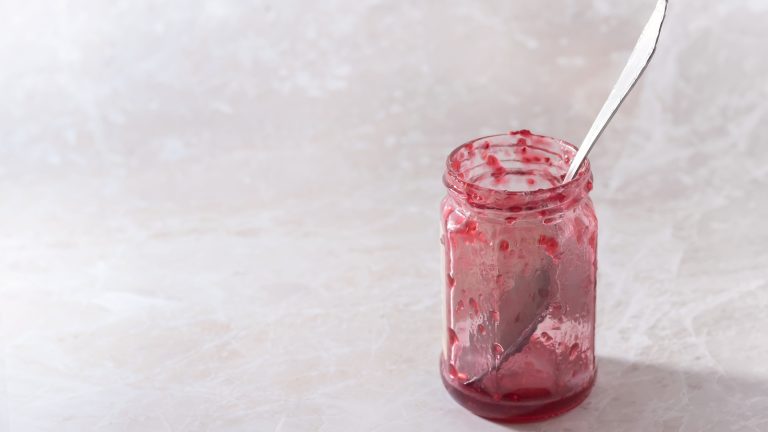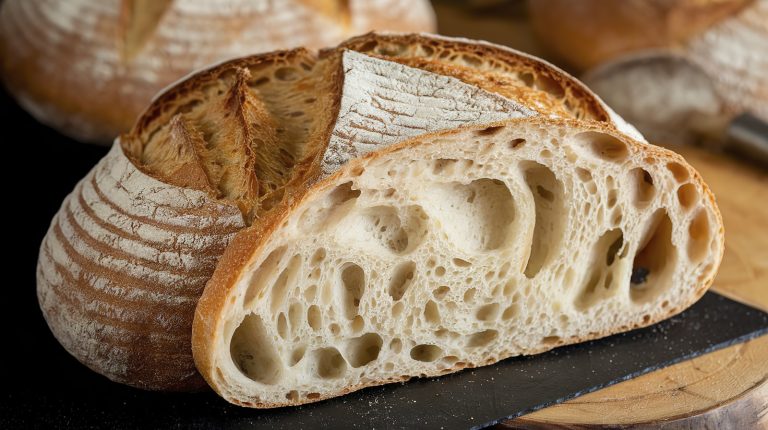Making butter at home is easier than it might seem, but it’s still more labor-intensive than simply buying the good stuff at the grocery store. Homemade, of course, also gives you way more control over ingredient quality and proportions. You want that little bit of work and carefully tailored consideration to not only turn out great, but also to last as long as possible. Butter-washing is critically important for ensuring the latter.
You can make butter at home with as little as some heavy cream and the best electric churner in your possession, or the same dairy, a mason jar, and a ton of upper body strength. Let’s say you’re working with a pint of cream and a hand mixer. Once you’ve beaten the dairy beyond the composition of a basic whipped cream, the semi-solids that you’ll begin to recognize as butter will separate from the remaining liquid, which is buttermilk.
You’ll then want to strain it all to remove that buttermilk — and you really want to take the time to remove as much as possible. Next, massage the solids and rinse under cold tap water (likely meriting a repeat) until the stream runs clear to remove any remaining buttermilk and extend the butter’s shelf life, as fresh liquid buttermilk has an earlier expiration date than the newly formed solid butter. Removing the buttermilk gives the butter a relative dryness, which is exactly what makes it less vulnerable to the moisture-loving bacteria responsible for turning liquids bad.
Fun things to do with your homemade (and washed!) butter
Once your butter is washed and ready, the best way to enjoy your homespun spread is decked out like a cosplaying milkmaid, or at least presented alongside your expertly arranged charcuterie board and baguette medallions so everyone can know that, yeah: you make your own butter. You’ll definitely want to enjoy the first few pats unadorned by accompaniments like jam or honey to truly appreciate your creation, and figure out what you might want to add. Salt is the most common contender and other everyday seasonings can help you whip up things like ultra flavorful garlic bread.
More elaborate compound butters will also help you dress up a steak or just add some fruity brightness to the batch. You never want to overdo the botanicals, however, to preserve the homemade butter’s flavor. That pint of heavy cream will most likely yield about eight ounces of butter, which is the equivalent of two standard sticks. In those proportions, about four tablespoons of your desired mix-ins will be plenty for handcrafting a compound butter without overdoing it. Once you’ve whipped up your butter, and given it a good wash, you’ll be ready to enjoy it how you like.


